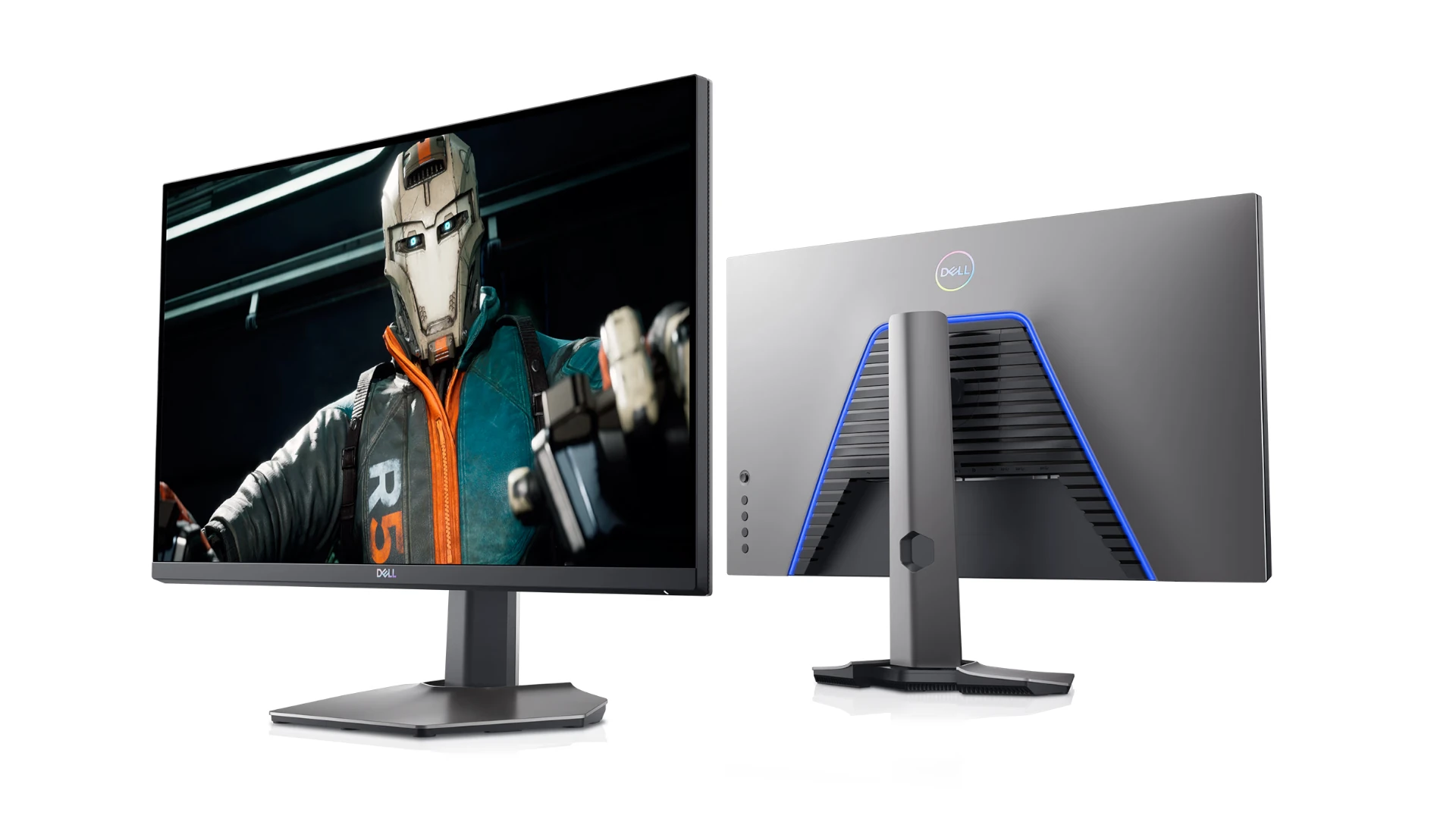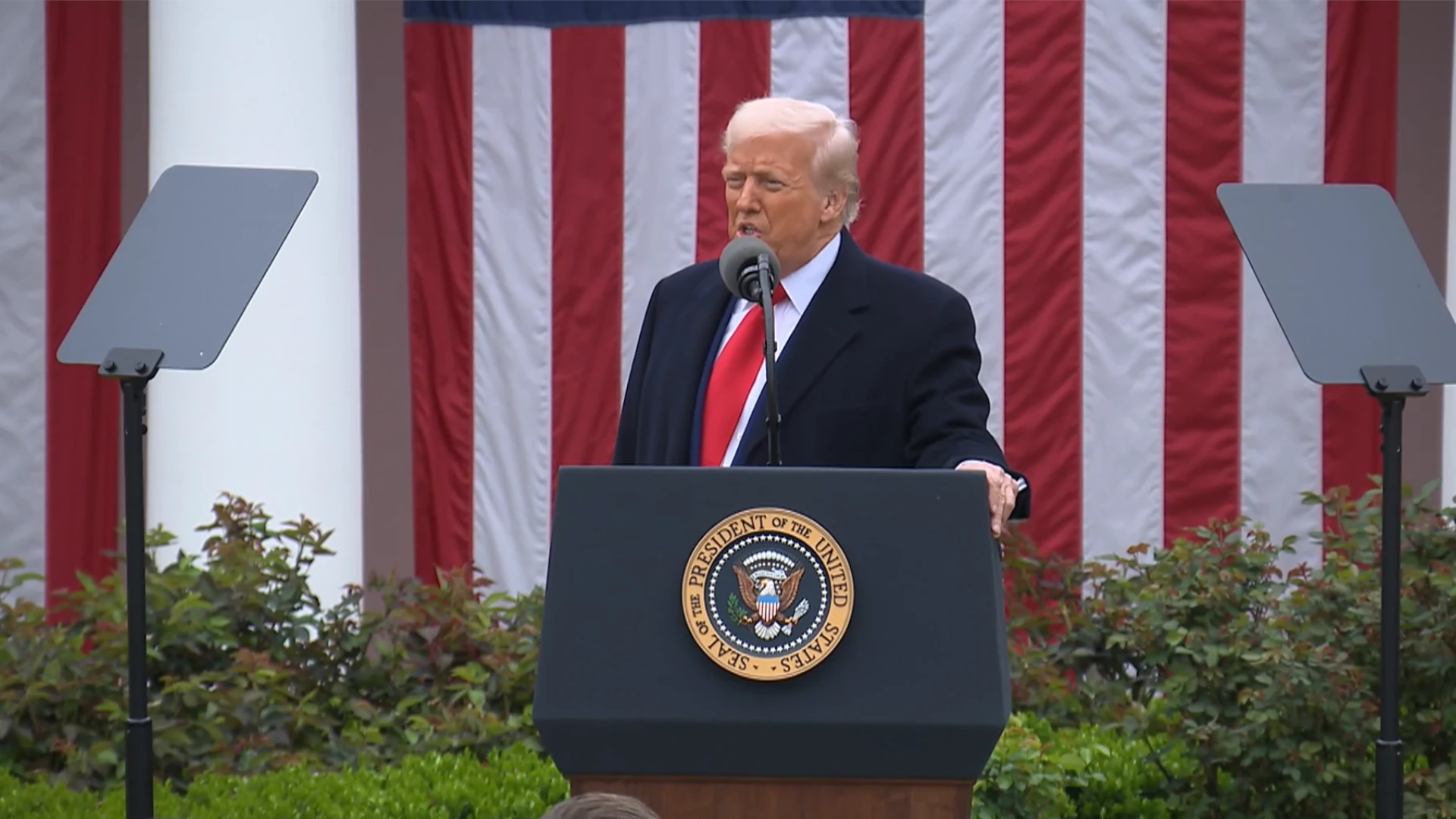In a significant move that reshapes the impact of his aggressive new trade policy, President Donald Trump has announced that smartphones, laptops, computer chips, and other vital tech products will be exempt from the sweeping tariffs he recently introduced. The exemptions, confirmed through U.S. Customs and Border Protection guidance, come just days after Trump proposed a 10% baseline tariff on all imports and a 125% tariff on Chinese goods as part of his “reciprocal tariff” strategy.
Major Win for the Tech Sector
This last-minute carve-out is being hailed by industry leaders as a critical lifeline for both U.S. consumers and tech companies. Exempt products include:
- Smartphones (such as iPhones, Samsung Galaxy devices)
- Laptop computers and tablets
- Hard disk drives and solid-state drives
- Computer processors (CPUs)
- Memory chips (RAM and flash storage)
- Semiconductor manufacturing equipment
- Flat-panel displays
- Routers and networking hardware

By excluding these items from the tariff hike, Trump effectively shields hundreds of billions of dollars in electronics from price inflation. Analysts note that devices like iPhones and MacBooks—many of which are manufactured in China—would have seen significant retail price spikes had the tariffs gone into full effect.
Why the Exemptions Matter
The tech industry had sounded alarms in recent weeks, warning that broad tariffs on electronics could cause chaos in global supply chains and severely impact American innovation. Apple, for instance, sources most of its devices from Chinese manufacturers like Foxconn. Similarly, the semiconductor ecosystem—crucial to everything from gaming consoles to data centers—relies on international cooperation between U.S., Taiwanese, South Korean, and Chinese firms.
Avoiding higher duties on chips and components also benefits smaller companies, startups, and consumers, who might otherwise absorb increased costs through higher prices on PCs, phones, and other essentials.
Which Companies Will Benefit the Most From the Tariff Exemptions?
The exemption of smartphones, computers, chips, and other electronics from Trump’s 145% tariffs is poised to provide major relief—and in some cases, significant strategic advantage—to a wide range of companies across the tech, manufacturing, and retail ecosystem. Here’s a closer look at which companies stand to gain the most:
Manufacturing & Component Suppliers
These companies rely heavily on overseas manufacturing, particularly in China, and were at the greatest risk of cost increases due to tariffs:

- Apple – With over 80% of its products manufactured in China (including iPhones, iPads, and Macs), Apple is perhaps the biggest winner. The company avoids massive cost hikes and maintains its global margins.
- Intel – A major player in CPUs and chipsets, Intel avoids tariffs on semiconductors, memory, and storage devices, which are crucial to its product lines.
- AMD – With a global supply chain and key components produced in Asia, AMD benefits from exemptions on processors and memory components.
- NVIDIA – Avoiding tariffs on GPUs and AI-related chips protects its growing data center and consumer GPU business.
- Qualcomm – Exemptions on modem chips and wireless components help the company maintain competitive pricing for phone manufacturers.
- Micron Technology – Exclusion of memory chips and SSDs safeguards a huge segment of its product portfolio.
- Broadcom – With semiconductor products used in everything from phones to networking gear, Broadcom avoids heavy disruptions.
- Foxconn, Pegatron, and Wistron – Major Taiwanese contract manufacturers for Apple and other U.S. companies benefit by maintaining their pricing competitiveness without absorbing tariff-related costs.
Consumer Tech & PC Makers
These brands would have passed higher component or manufacturing costs directly to customers. Now, they can maintain pricing or margins:

- Dell – A large portion of its laptops and desktops are built in Asia. Tariff relief helps avoid product price hikes.
- HP Inc. – Similar to Dell, HP’s extensive global supply chain means it benefits greatly from the exemptions.
- Lenovo (U.S. operations) – Though a Chinese company, Lenovo has significant U.S. sales, and the exemption helps its North American division remain competitive.
- Microsoft – Benefits from Surface device protection, plus indirect benefits through partner OEMs and chip vendors.
- Acer and ASUS – Taiwanese PC brands with large U.S. presence avoid supply chain disruption and cost escalation.
Retailers & Distributors
Retailers relying on affordable electronics to drive foot traffic and sales are breathing easier:
- Best Buy – One of the biggest beneficiaries on the retail side, especially for laptops, smartphones, and smart home devices.
- Amazon – With a massive consumer electronics presence and private-label tech products, Amazon avoids pricing backlash.
- Walmart – Tariff exemptions help maintain low prices on popular electronics like tablets, phones, and accessories.
- Target, Costco, and B&H – These retailers also gain from stable pricing and continued availability of high-demand electronics.
- Newegg and Micro Center – Enthusiast and DIY PC hardware sellers benefit as component prices stay steady.

Logistics, Cloud & Infrastructure
Even behind-the-scenes tech infrastructure stands to benefit:
- Cisco Systems – Avoids tariffs on networking equipment and routers, preserving government and enterprise contract margins.
- Google and Meta (hardware divisions) – Their device lines like Pixel and Quest benefit from cost stability.
- Amazon Web Services, Microsoft Azure, Google Cloud – As buyers of massive amounts of server hardware, they benefit indirectly from lower component costs.
Altogether, the exemption package acts like a shock absorber across the entire tech economy—from silicon and server racks to store shelves and smartphones. With supply chains still stabilizing post-pandemic and amid global tensions, avoiding additional financial stress from tariffs could not have come at a more critical time.
Strategic Timing Ahead of the Election
This exemption announcement is also being viewed through a political lens. With the 2024 election cycle intensifying, Trump’s move could be aimed at minimizing consumer backlash over inflation while still maintaining a hardline trade stance. By framing the decision as “reciprocal” rather than protectionist, Trump positions the exemptions as part of a smarter, targeted strategy rather than a retreat from tough-on-China policies.

Mixed Reaction From Industry and Economists
While many in the tech world are breathing a sigh of relief, economists argue that the broader impact of Trump’s global 10% tariff still looms large. Industries not granted exemptions—such as furniture, apparel, automotive parts, and industrial equipment—may still face increased costs. Additionally, trade experts caution that even targeted tariffs can lead to retaliatory actions from China, escalating trade tensions once again.
What Comes Next
As the global economy continues to adapt to shifting U.S. trade policies, this exemption list may evolve. Supply chain managers are already reassessing logistics plans based on the changes, and companies like Apple, Dell, and HP will be closely watching for any further developments. Meanwhile, retailers are adjusting their forecasts for product pricing and availability heading into the holiday shopping season.
For now, though, consumers can expect to keep buying their favorite phones, laptops, and gaming gear without feeling the sting of higher tariffs—at least not just yet.
Key Takeaways
- Smartphones, computers, and semiconductor chips have been exempted from Trump’s new 125% tariffs on Chinese goods.
- The exemptions prevent potential price increases on essential consumer electronics that millions of Americans use daily.
- Other products remain subject to the reciprocal tariffs, which will continue to reshape trade relationships between the United States and China.
Overview of the Tariff Exemptions
President Trump’s administration has announced key exemptions to its reciprocal tariffs, specifically protecting consumer electronics and semiconductor products from new trade penalties. These exemptions will significantly impact global markets and consumer prices.
Tech Industry Pressure and Market Fallout Sparked the Exemptions
The decision to exempt smartphones, laptops, chips, and other electronics from Trump’s 145% reciprocal tariffs came amid mounting pressure from top tech executives and escalating financial repercussions. According to guidance issued by U.S. Customs and Border Protection, the exemptions also extend to solar cells, flat-panel TV displays, flash drives, memory cards, and solid-state drives—critical components for consumer electronics and data infrastructure.
Industry analysts say the move was not only strategic but necessary. Companies like Apple, which manufactures over 80% of its products in China—including iPhones, iPads, and more than half of all Mac computers—faced potential disaster under the original tariff plan. In fact, Apple alone lost more than $640 billion in market value in the days following the initial tariff announcement.
“This is the dream scenario for tech investors,” said Dan Ives, a leading tech analyst at Wedbush Securities. “The tariffs were a black cloud over tech. No sector was more at risk than Big Tech. Exempting smartphones and chips is a game changer.”
The exemption is being seen as a direct response to urgent lobbying efforts from major tech CEOs, who reportedly voiced concerns that the proposed tariffs could have led to a financial “Armageddon” for the industry. This behind-the-scenes advocacy appears to have influenced the White House’s decision to protect critical components and devices from the harshest penalties.
Although the products are currently excluded, experts caution that they could still face lower-tier tariffs in the future, keeping the tech sector on high alert for further policy shifts.
Products and Technologies Affected
The tariff exemptions cover a wide range of popular consumer electronics and components. Smartphones and laptop computers have been fully exempted from the new trade penalties. The list also includes critical technological components such as:
- Computer processors
- Memory chips
- Hard drives
- Other electronic devices
These exemptions are particularly significant for the tech industry, as many popular consumer electronics rely heavily on components manufactured overseas. The decision protects much of the electronics supply chain from potential price increases.
The U.S. government’s decision comes despite broader tariff actions against Chinese imports, with these specific tech categories receiving special treatment.
Rationale Behind the Exemptions
The Trump administration’s decision to exempt these products appears strategic rather than random. Consumer electronics represent significant imports that Americans purchase regularly, and tariffs would directly impact consumer prices.
Many of these exempted products, particularly semiconductor chips, are essential for U.S. economic and national security interests. The global chip shortage in recent years demonstrated the critical nature of these components to multiple industries.
The exemptions also protect U.S. tech companies that rely on global supply chains. Companies like Apple, which design products in the U.S. but manufacture them abroad, would face significant challenges if these items were subject to the full 125% tariff rate.
Stock markets responded positively to these exemptions, with tech companies seeing share price increases following the announcement.
Economic Impact
President Trump’s recent tariff exemptions for electronics represent a significant shift in trade policy that affects multiple economic sectors and international relationships. These decisions will shape consumer costs, business operations, and America’s trade balances in various ways.
Effects on Consumers and Businesses
The exemption of smartphones, laptops, and semiconductor products from Trump’s “reciprocal” tariffs brings notable relief to American consumers and businesses alike. Without these exemptions, prices for everyday electronics would likely rise substantially, affecting household budgets nationwide.
Tech companies that rely on global supply chains can maintain more stable pricing strategies. This particularly benefits retailers and manufacturers who depend on imported components from China and Taiwan.
However, businesses in other sectors not covered by exemptions still face higher costs. These companies must choose between absorbing tariff expenses, raising prices, or seeking domestic sources for materials.
Many American businesses have already begun restructuring their supply chains in response to the broader tariff policy, despite these specific exemptions. The selective nature of these carve-outs creates an uneven competitive landscape across different industries.
Implications for U.S. and Global Trade Relations
The selective exemption approach has created mixed reactions from U.S. trading partners. China views these targeted exclusions as acknowledgment of economic interdependence in tech sectors, though tensions remain high in other areas.
Canada and Mexico, major trading partners under the USMCA, are watching closely as these exemptions may signal flexibility in Trump’s trade approach. Both countries have expressed concerns about potential spillover effects on their export markets.
The decision to exempt semiconductor-related products appears strategically aimed at maintaining good relations with Taiwan, a critical chip supplier. This move reflects the administration’s recognition of semiconductor supply vulnerabilities.
Global supply chains remain under pressure despite these exemptions, as many companies accelerate diversification plans to reduce reliance on any single market. The overall trade war climate continues to disrupt established business partnerships.
Potential Changes in Trade Deficit
The Treasury Department projects mixed impacts on America’s trade deficit from these targeted exemptions. While electronics imports from China will continue unimpeded, other imported goods face new barriers intended to reduce the overall trade imbalance.
Economic analysts note that previous rounds of tariffs failed to significantly reduce the deficit with China. In fact, the U.S. continues to import substantial quantities of goods from China despite years of trade tensions.
The emphasis on exempting semiconductor manufacturing equipment may actually increase the deficit temporarily as companies invest in domestic chip production capabilities, requiring significant equipment imports.
U.S. exports face potential retaliation from trading partners affected by non-exempted tariffs, potentially offsetting gains in deficit reduction. Agricultural exports remain particularly vulnerable to counter-tariffs from China and other markets.
Economists debate whether these targeted exemptions reflect a strategic approach to balance trade or simply acknowledge the economic damage widespread electronics tariffs would cause to U.S. consumers and technology firms.
Industry Reactions and Adjustments
The tech industry has rapidly mobilized to address the changing tariff landscape, with major players implementing both short and long-term strategies to mitigate financial impacts while maintaining global competitiveness.
Response from Tech Companies
Apple, Nvidia, and other tech giants have voiced strong concerns about the tariff increases from 10% to 25% on Chinese-made products. Many companies have already begun pushing manufacturing out of China to avoid these penalties.
Industry leaders are lobbying intensely for exemptions, particularly for components tied to critical minerals like tungsten and tellurium that remain difficult to source outside China. These materials are essential for semiconductor production and advanced electronics.
Several firms have announced plans to absorb some costs rather than passing them entirely to consumers. However, analysts predict smartphone prices could still rise by 7-12% in affected markets by late 2025.
Tech companies have also accelerated investments in automation and AI to reduce labor costs and maintain competitive pricing despite tariff pressures.
Shifts in Manufacturing and Supply Chains
The tariff situation has triggered significant supply chain restructuring. Companies are diversifying production locations with Vietnam, India, and Mexico emerging as primary beneficiaries of manufacturing shifts from China.
Samsung and Apple have already relocated portions of their smartphone assembly operations, with both companies reporting 30% reductions in Chinese manufacturing capacity since 2023.
The semiconductor industry faces particular challenges as chip production involves complex global supply chains. While finished chips received exemptions, many server components containing these chips still face tariffs.
Companies are also investing heavily in intellectual property protection and domestic manufacturing capabilities. Intel recently announced a $5 billion expansion of its Arizona facilities partly in response to tariff concerns.
Supply chain experts note these adjustments come with significant costs and transition periods, potentially creating market disruptions through 2026 as new manufacturing hubs develop necessary infrastructure and expertise.
Long-Term Implications and Strategic Considerations
The exemption of electronics from President Trump’s tariffs will reshape trade dynamics with China while influencing domestic manufacturing priorities. These decisions reflect strategic calculations about economic interests and political objectives.
Influence on Future Trade Policies
President Trump’s selective approach to tariffs signals a nuanced trade strategy rather than a blanket punitive approach. By exempting smartphones, laptops and memory chips, the administration demonstrates awareness of consumer impact while maintaining pressure on other sectors.
This selective targeting may become a template for future negotiations with China and other trading partners. The European Union is watching closely, as similar approaches might be applied in ongoing trade talks.
The administration appears to be balancing aggressive trade rhetoric with pragmatic exemptions. This balancing act could influence the renewal or modification of trade agreements like USMCA.
Chinese officials may interpret these exemptions as negotiation openings rather than permanent concessions. This could create space for compromise on other contentious trade issues.
Strengthening of Domestic Markets
The targeted nature of these tariffs suggests an attempt to pressure China while protecting American tech consumers from price increases. This approach contrasts with earlier tariff policies that resulted in retaliatory taxes from trading partners.
The exemptions appear strategically designed to avoid disrupting the domestic semiconductor revival that was threatened by previous tariff policies. This protection of tech hardware could support ongoing efforts to build domestic chip manufacturing capacity.
Energy sectors like coal, natural gas, and crude oil remain central to the administration’s trade calculations. The tech exemptions may free up political capital to maintain tariff pressure on Chinese energy imports.
American tech companies facing manufacturing challenges from tariffs now have breathing room to adapt supply chains without immediate consumer price increases.
Frequently Asked Questions
President Trump’s recent tariff policy includes significant exemptions for key technology products. These decisions affect both consumers and manufacturers while reflecting specific economic and strategic priorities.
What items are excluded from the latest tariff adjustments related to technology products?
The recent tariff exemptions specifically cover several popular consumer electronics. Smartphones, laptop computers, hard drives, computer processors, and memory chips are all excluded from the new “reciprocal” tariffs.
These exemptions focus on products that American consumers use daily, preventing potential price increases on essential technology items.
How will the exemption of phones, laptops, and chips from the new trade penalties impact consumers?
Consumers will likely avoid significant price increases on essential electronic devices. Without these exemptions, the tariffs would have pushed retail prices higher for everyday technology.
Many households and businesses regularly purchase these items, making the exemptions particularly meaningful for maintaining affordable access to modern technology.
What is the rationale behind exempting certain electronic goods from the newly imposed tariffs?
The administration appears to be balancing trade priorities with consumer interests. These exemptions protect American consumers from price hikes on widely used technology products.
The decision also acknowledges the global supply chain realities of the tech industry. Many of these products rely on international manufacturing networks that would be difficult to replicate domestically in the short term.
Are there any specific conditions or time frames associated with the tariff exemptions for these tech products?
While the current exemptions are in place, President Trump has indicated that processor-related products may face their own chip-focused tariff “very soon”. This suggests the exemptions may be temporary or subject to revision.
The administration has created a pattern of frequent modifications to tariff policies, suggesting that businesses should prepare for potential changes to the current exemptions.
How are the tariff changes expected to influence the tech industry, particularly manufacturers of phones, laptops, and chips?
Tech companies gain breathing room to adjust their supply chains without immediate price pressures. Major electronics manufacturers can maintain current pricing structures while developing longer-term strategies.
The exemptions may prompt some companies to accelerate plans for diversifying manufacturing locations. This could ultimately lead to shifts in global production patterns for consumer electronics.
What future modifications or reviews to the tariff exemptions on electronic goods has the government planned or indicated?
The administration has specifically warned that processor-related products will receive their own chip-focused tariff in the near future. This signals a targeted approach to semiconductor policy separate from consumer devices.
An executive order signed on April 9, 2025 increased tariffs on Chinese-origin goods, suggesting ongoing revisions to trade policy that could eventually affect technology sectors currently enjoying exemptions.







